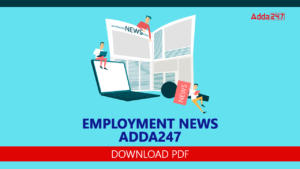Dear Readers,
Vocabulary is an important part of English that helps you deal with all kinds of questions in objective as well as descriptive papers of various exams. You can learn new words daily from our Daily Word List. Learn the words and make your own sentences on the basis of the given word list. Here are a few words from an article published in Livemint.
The previous instalment of Cafe Economics focused on the fragile economics of bitcoin’s design makes it more a speculative financial asset rather than a stable monetary unit. The column ended as follows: “There are now growing signs that central banks are trying to figure out how to embrace the blockchain(1) future. What will that mean for the money supply process as well as for monetary policy?”
Higher prices create incentives for miners to bring more bitcoins into play, but the underlying algorithm restricts the total supply of the cryptocurrency to 21 million units. Such rigid money supply reduces the scope for discretionary(2) monetary policy that every nation state seeks to pursue. However, central banks could use the new blockchain technology to create their own variants of digital money, a move that could possibly alter monetary policy in profound(3) ways as well as undermine the traditional banking system, as pointed out by Bank of England economist Marilyne Tolle in July 2016 blog post.
There are two types of money in any modern economy—the base money created by central banks in their balance sheets and a broader measure of money that is powered by bank credit. The former is usually lower than the latter. Banks create money out of thin air(4). In other words, the money multiplier (the ratio of broad money to base money) is greater than one. How will matters change if central banks begin to offer their own cryptocurrencies?
Citizens cannot own central bank money in the current scheme of things. They can only own bank deposits. Our transactions with one another are done via banks, with the central bank only providing clearing house facilities to transfer money. The central bank eventually needs banks to conduct its monetary policy. Think of the endless Indian debates on monetary policy transmission, or why the signals from the central bank are not picked up by commercial banks.
It is quite possible that citizens will be able to directly own central bank money in a blockchain future, bypassing commercial banks. Central banks will not just be bankers to banks but also bankers to citizens. In other words, direct access to central bank money as well as the central bank ledger can shake the business models of banks to their very foundation. This does not necessarily mean that banks will cease to exist, but they could face existential challenges.
Blockchain currency issued by central banks could also have a deep impact on the conduct of monetary policy. All central banks try to keep inflation at a certain level by moving some policy levers. The traditional monetarist lever was the growth in the supply of broad money, through policies such as open market operations, foreign exchange intervention and changes in the statutory reserve ratios.
The underlying belief is that inflation is eventually caused by excess money supply. Monetarism can work only if the demand for money is predictable. (The demand for money also plays a central role in the alternative Cambridge Equation in monetary economics.) A central bank that can correctly forecast the demand for money can thus adjust money supply accordingly. Most countries moved away from monetarism in the 1990s because the demand for money became unstable. The reason: the wave of financial liberalization that swept through(5) the world.
The inability to target money supply forced central banks to use interest rates as their intermediate policy target. Anybody with even a passing interest in contemporary(6) monetary policy will know that the main tool used by central banks is the short-term interest rate, though money supply did make a comeback through quantitative easing because interest rates in many developed economies were close to zero.
Blockchain could help monetary policy makers turn the clock back to money supply targeting. Why? The fact that citizens can directly access base money from the central bank balance sheet means that—at least in theory—a monetary policy maker will have precise information on the demand for money. In fact, the digital central bank ledger should be able to give central bankers real-time information on the demand for money.
A central banker who does not have to second guess(7) the demand for money in an economy could then go back to using money supply as his main policy tool. Money supply can be adjusted to ensure that the demand for money is met, given a certain inflation target. Tweaking(8) interest rates may no longer be the main business of central banks. Money supply targeting could once again come into play.
These are thought experiments—and readers are invited to extend, question or pull down the preliminary ideas in these two columns on the cryptocurrency challenge. It is still early days, and there is still a lot of uncertainty about the underlying economics of cryptocurrencies as well as their impact on the conduct of monetary policy.
Central banks will eventually have to grapple(9) with the powerful challenge that blockchain has thrown at the traditional monetary systems. Nation states that see the control of money as one of the most important weapons of sovereignty in their armoury(10) will also have to figure out how to adapt to currencies such as bitcoins. It is going to get even more interesting from here.
1. Blockchain [blɒktʃeɪn]
Noun: a digital ledger in which transactions made in bitcoin or another cryptocurrency are recorded chronologically and publicly.
2. Discretionary [dih-skresh-uh-ner-ee]
Adjective: subject or left to one’s own discretion; for any use or purpose one chooses; not earmarked for a particular purpose.
Synonyms: unrestricted, at the call, elective, facultative, judge and jury, leftover, nonmandatory, nonobligatory, open, optional.
Antonyms: nondiscretionary.
3. Profound [pruh-found]
Adjective: penetrating or entering deeply into subjects of thought or knowledge; having deep insight or understanding; originating in or penetrating to the depths of one’s being.
Synonyms: deep, intelligent, philosophical, serious, subtle, thorough, weighty, abstruse, acroamatic, difficult, discerning, enlightened, erudite, esoteric, heavy, hermetic, informed, intellectual, knowing, knowledgeable, learned, mysterious, occult.
Antonyms: light, open, superficial, trivial.
4. Out of thin air: from nothing, as of something that has suddenly materialized.
5. Sweep through: to move through something or some place quickly and with grand flourishes; to perform some task quickly.
6. Contemporary [kuh n-tem-puh-rer-ee]
Adjective: existing, occurring, or living at the same time; belonging to the same time; of about the same age or date.
Synonyms: new, present-day, current, instant, latest, mod, now, present, recent, today, abreast, au courant, contempo, existent, extant, hot off press, in fashion, in vogue, just out, leading-edge, newfangled, red-hot, state-of-the-art, topical, ultramodern.
Antonyms: future, old, past, old-fashioned.
7. Second guess: to try to anticipate how something will happen or what someone will do.
8. Tweak [tweek]
Verb: to pinch and pull with a jerk and twist; to pull or pinch the nose of, especially gently; to make a minor adjustment to.
Synonyms: tease, twist, jerk, pinch, pluck, pull.
9. Grapple [grap-uh l]
Verb: to hold or make fast to something, as with a grapple; to use a grapple.
Synonyms: confront, contend, cope, deal with, attack, battle, catch, clash, clasp, close, clutch, combat, encounter, engage, face, fasten, fight, grasp, grip, hold, hook, hug, nab.
Antonyms: agree, avoid, be immune, cancel.
10. Armoury [ˈɑːmərɪ]
Noun: a secure place for the storage of weapons; armour generally.




 The Hindu Review October 2022: Download ...
The Hindu Review October 2022: Download ...
 RBI Assistant Syllabus 2024 and Exam Pat...
RBI Assistant Syllabus 2024 and Exam Pat...
 Employment News 2024, Download Weekly PD...
Employment News 2024, Download Weekly PD...



